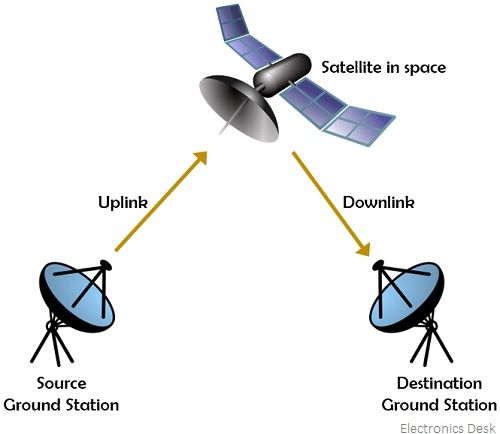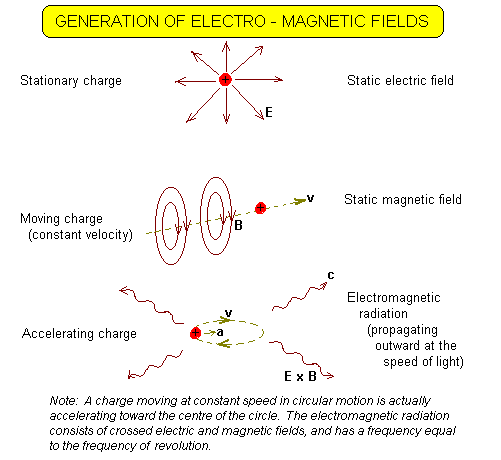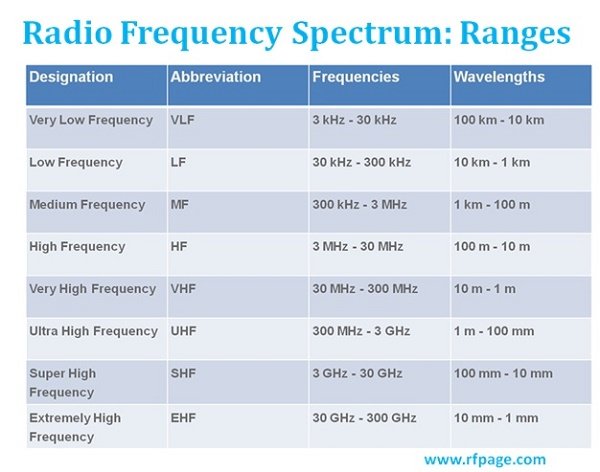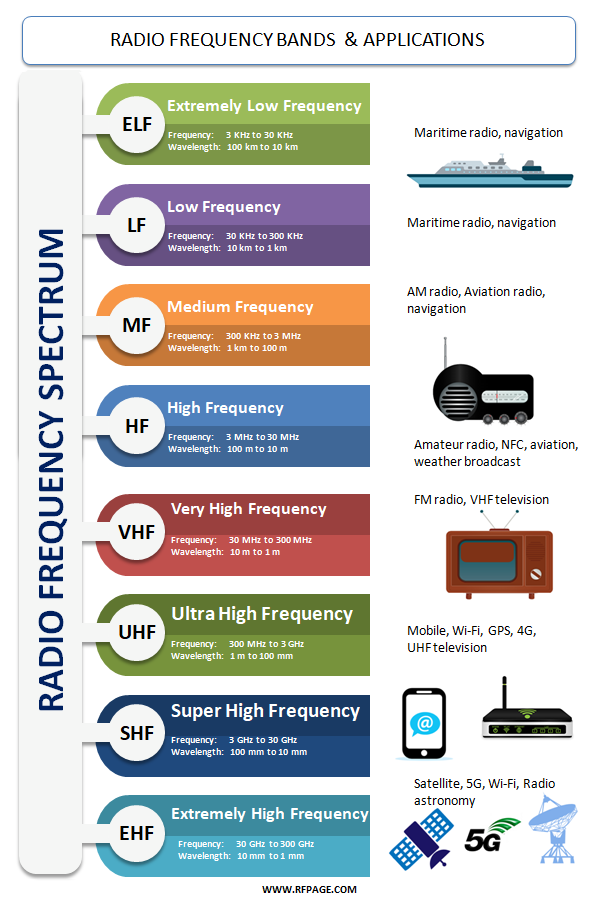Free Courses Sale ends Soon, Get It Now


Free Courses Sale ends Soon, Get It Now



Disclaimer: Copyright infringement not intended.
Space Communication: An overview
To be useful satellites and spacecraft must communicate, sometimes to relay communications between two points to transmit data they have collected. The communication system is an essential part of a spacecraft, enabling spacecraft to transmit data and telemetry to Earth, receive commands from Earth, and relay information to one another.
A communications system consists of the ground segment: one or more ground stations located on Earth, and the space segment: the spacecraft and their respective communication payloads. The three functions of a communications system are receiving commands from Earth (uplink), transmitting data down to Earth (downlink), and transmitting or receiving information from another satellite (crosslink or inter-satellite link).

Types of Communication Systems
There are two types of communication systems: radio frequency (RF) and free space optical (FSO) also referred to as laser communications (lasercom).
Most spacecraft communications systems are radio frequency based - one part of the electromagnetic spectrum.
Satellites communicate by using radio waves to send signals to the antennas on the Earth. The antennas then capture those signals and process the information coming from those signals. Information can include:
An RF system communicates by sending data over electromagnetic waves to and from antennas. Information is encoded onto radio frequency waves using modulation and sent to the receiving system where it is demodulated and decoded.
But recent development in FSO communications has made it a strong alternative to RF systems. FSO systems consist of a transmitting terminal and receiving terminal. Much like an RF system, information is encoded onto electromagnetic waves using modulation and sent to the receiving system. FSO links operate at a much higher frequency than RF links, generally at infrared or visible bands. Higher frequencies result in wider bandwidths which result in higher data rates.
Back to basics: The Electromagnetic Spectrum
There are four, and only four known forces in the universe. These are, in order of strength - the nuclear strong force, the electromagnetic force, the nuclear weak force and the gravitational force. The two nuclear forces exert their influence over only very very short (nuclear) distances, and apart from holding all matter together do not directly influence us in everyday life. It is gravity and particularly electromagnetism that are of direct concern to us in our daily interactions.
Gravity springs from the property of matter we call mass, while electromagnetic effects derive from the property we call charge.

When a charge is stationary, it has around it an electrostatic field. If it moves with a constant velocity it produces a magnetic field, and when it acceldeceleratesdeclerates it generates electromagnetic radiation.
Electromagnetic radiation is a coupled oscillation of electric and magnetic fields that propagates through space with a velocity of aboumeters108 meters per second. The properties of this electromagnetic radiation vary markedly depending on the frequency of the oscillation. This gives rise to what we know as the electromagnetic spectrum.
The diagram below shows the major divisions of the electromagnetic spectrum. An electromagnetic wacharacterizedracterised by its frequency f (the number of times per second the signal undergoes a complete oscillation at a specified point in space) or its wavelength λ (the distance between successive extremal values of the wave at a specified time).

The Radio Spectrum
The radio spectrum is a subset of the electromagnetic spectrum. It extends from frequencies below 1 Hz up to around 3000 GHz or 3 THz, where it gives way to the infrared spectrum. Different frequencies have different uses because of different propagation, ,generation and general properties. All known transmission systems work in the RF spectrum range including analog radio, aircraft navigation, marine radio, amateur radio, TV broadcasting, mobile networks, and satellite systems. Let’s take a look at each of the RF sub-bands and the areas of RF spectrum uses.


Radio Frequency Communication in Space: The mechanism
A radio communication system includes a radio transmitter, a free-space communication channel, and a radio receiver. At the top level, a radio transmitter system consists of a data interface, modulator, power amplifier, and antenna. The transmitter system uses the modulator to encode digital data onto a high-frequency electromagnetic wave. The power amplifier then increases the output RF power of the transmitted signal to be sent through free space to the receiver using the transmit antenna.
The radio receiver system uses a receiving antenna, low noise amplifier, and demodulator to produce digital data output from the received signal. The receiving antenna collects the electromagnetic waves and routes the signal to the receiver, which then demodulates the wave and converts the electrical signals back into the original digital message. Low noise amplifiers and filters are sometimes employed to reduce signal noise in certain frequency bands or increase the received signal strength. In many cases, the functions of the modulator and demodulator are combined into a radio transceiver that can both send and receive RF signals.
Radiofrequency communications for spacecraft are conducted between 30 MHz and 60 GHz. The lower frequency bands are typically more mature for SmallSat usage, however extensive use of these bands has led to crowding and challenges in acquiring licensing. Higher frequencies offer a better ratio of gain-to-aperture-size, but require higher power due to increased atmospheric attenuation at those frequencies and the higher free space loss that is directly proportional to frequency.

At its simplest, space communication rely on two things: a transmitter and a receiver. A transmitter encodes a message onto electromagnetic waves through modulation, which changes properties of the wave to represent the data. These waves flow through space toward the receiver. The receiver collects the electromagnetic waves and demodulates them, decoding the sender’s message.
Consider a Wi-Fi router and networked devices around the home. Each device receives signals from the router, which transmits data from the internet. At its heart, the complex task of communicating with space resembles wireless communications in the home – only on an enormous scale and at incredible distances.
Historical Space Frequencies
The first satellite to orbit the Earth was Sputnik 1, launched by the Soviets in October 1957. It carried two radio beacons on frequencies of 20.005 and 40.01 MHz.
The Soviets continued to use frequencies around 20 MHz and even some around 15 MHz for many subsequent missions.
The first satellite launched by the USA (Explorer 1) carried beacons on 108.00 and 108.03 MHz. This lay just above the terrestrial FM broadcast band (from 88 to 108 MHz) and just inside the civil aviation band which extends from 108 to 136 MHz. This frequency had been specified by an international committee for the International Geophysical Year (IGY - 1957/8) as the one to be used for all scientific satellites launched in pursuit of IGY objectives. The Soviets had chosen to ignore this recommendation and use the much lower frequencies previously mentioned.
Space Communication Bands
The following is a list of some of the more heavily used frequency bands for space communication. Specific frequencies may be found in the links provided at the end of this note.
VHF Band
UHF Band
L Band
S Band
C Band
X band
Ku band
'Ka' band
Radio Frequency Allocation
The International Telecommunication Union (ITU), in its International Radio Regulations, divides the world into three ITU regions for the purposes of managing the global radio spectrum. Each region has its own set of frequency allocations, the main reason for defining the regions.
Boundaries
Region 1 comprises Europe, Africa, the Commonwealth of Independent States, Mongolia, and the Middle East west of the Persian Gulf, including Iraq.
Region 2 covers the Americas including Greenland, and some of the eastern Pacific Islands.
Region 3 contains most of non-FSU Asia east of and including Iran, and most of Oceania.
Managing Space Communication
Ground Networks
Communicating from space involves more than pointing a spacecraft’s antenna at the Earth. NASA has an extensive network of antennas around the globe — over all seven continents — to receive transmissions from spacecraft. Network engineers carefully plan communications between ground stations and missions, ensuring that antennas are ready to receive data as spacecraft pass overhead.
Ground station antennas range from the high-frequency frequency antennas that provide backup communications to the space station to a massive, 230-foot antenna that can communicate with far-off missions like the Voyager spacecraft, over 11 billion miles away.
Space Relays
In addition to direct-to-Earth communications, many missions rely on relay satellites to get their data to the ground. For example, the space station communicates through Tracking and Data Relay Satellites (TDRS), which transmit data to ground stations in New Mexico and Guam. The recently launched Mars 2020 Perseverance rover will send data through orbiters around Mars, which forward the data to Earth.
Relays offer unique advantages in terms of communication availability. For example, the placement of TDRS at three different regions above Earth offers global coverage and near-continuous communications between low-Earth orbit missions and the ground. Rather than waiting to pass over a ground station, TDRS users can relay data 24 hours a day, seven days a week.
Bandwidth
NASA encodes data on various bands of electromagnetic frequencies. These bandwidths — ranges of frequencies — have different capabilities. Higher bandwidths can carry more data per second, allowing spacecraft to downlink data more quickly.
Currently, NASA relies primarily on radio waves for communications, but the agency is developing ways to communicate with infrared lasers. This type of transmission — dubbed optical communications — will offer missions higher data rates than ever before.
NASA’s Laser Communications Relay Demonstration (LCRD) will showcase the benefits of optical communications. The mission will relay data between ground stations in California and Hawaii over optical links, testing their capabilities. NASA will also furnish the space station with an optical terminal that can relay data to the ground via LCRD.
Latency
Communications don’t occur instantaneously. They’re bound by a universal speed limit: the speed of light, about 186,000 miles per second. For spacecraft close to Earth, this time delay — or communications latency — is almost negligible.
However, farther from Earth, latency can become a challenge. At Mars’ closest approach — about 35 million miles away — the delay is about four minutes. When the planets are at their greatest distance — about 250 million miles away — the delay is around 24 minutes. This means that astronauts would need to wait between four and 24 minutes for their messages to reach mission control, and another four to 24 minutes to receive a response.
Interference
As communications transmissions travel over long distances or through the atmosphere, the quality of their data can deteriorate, garbling the message. Radiation from other missions, the Sun, or other celestial bodies can also interfere with the quality of transmissions.
To make sure that mission operations centers receive accurate data, scientists use methods of error detection and correction. Methods of error correction include computer algorithms that interpret noisy transmissions as usable data.
Wrapping up
Management of space communication involves two broad sets of tasks: looking after current spacecraft and finding ways to improve communications for future missions. Systems require ongoing testing and refinement, while space agencies are also working to develop new capabilities. Therefore, there need to be cost-effective testing methods for space communication. These include modeling and simulation.
Must Read: https://www.iasgyan.in/blogs/radio-waves
Citation
https://www.nasa.gov/smallsat-institute/sst-soa/communications
https://www.rfpage.com/what-are-radio-frequency-bands-and-its-uses/
https://www.spaceacademy.net.au/spacelink/radiospace.htm
https://www.nasa.gov/smallsat-institute/sst-soa/communications
https://www.nasa.gov/feature/goddard/2020/space-communications-7-things-you-need-to-know
© 2024 iasgyan. All right reserved